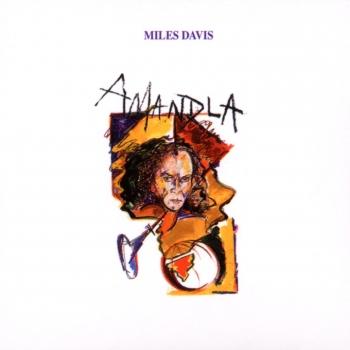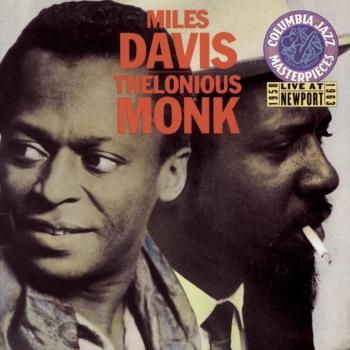
On The Corner Miles Davis
Album info
Album-Release:
1972
HRA-Release:
11.02.2015
Album including Album cover
I`m sorry!
Dear HIGHRESAUDIO Visitor,
due to territorial constraints and also different releases dates in each country you currently can`t purchase this album. We are updating our release dates twice a week. So, please feel free to check from time-to-time, if the album is available for your country.
We suggest, that you bookmark the album and use our Short List function.
Thank you for your understanding and patience.
Yours sincerely, HIGHRESAUDIO
- 1 On the Corner / New York Girl / Thinkin' of one Thing and Doin' Another / Vote for Miles 19:56
- 2 Black Satin 05:14
- 3 One and One 06:09
- 4 Helen Butte / Mr. Freedom X 23:19
Info for On The Corner
„On The Corner“ enjoys a special cult status among musicians, anticipating as it does the punk funk/acid jazz movements. For Miles Davis, „On The Corner“ was another seismic shift. Miles was particularly fond of the lyric sweep of Hendrixian electric guitar, the James Brown-like rhythmic thump of Fender bass, and the bell-like timbre and chordal possibilities of the Fender/Rhodes electric piano. Now the trumpeter sought to incorporate the feel of street rhythms from around the world and to reflect the influence of modern electronic composers such as Karlheinz Stockhausen.
So while „On The Corner“ is generously populated with top-flight jazz players, Davis was zeroing in on a contemporary approach not beholden to jazz players of jazz rhythmic postures--although group improvisation is still very much the order of the day. In paving the way for his Afro-psychedelic working bands of the mid-70's, Davis was roundly dissed, but „On The Corner“ endures brilliantly--the dark lady of Miles' musical sonnets.
The album is a furious carnival of rhythm. The first section is dominated by an Afro-Cuban groove, the eerie distortion of Miles' wah-wah trumpet, John McLaughlin's nasty electric leads and a swelter of rhythms--every instrument seemingly transformed into a drum. The second section beginning with 'Black Satin' is driven along by a commanding Michael Henderson bass line, a celestial drone of Indian bells, sitars, tablas, congas and handclaps, some skanky Herbie Hancock keyboards, and a skittering Davis solo.
'...Essential....a masterpiece and a visionary forecasting of modern music....representing the high water mark of his experiments in the fusion of rock, funk, electronica and jazz...' (Alternative Press)
'...A sound that provides an eerie parallel to some of Funkadelic's more atmospheric stuff...' (JazzTimes)
'...With its hypnotic post-soul grooves and its sound collage aesthetic, ON THE CORNER can now be appreciated as a seedbed of hip-hop, M-Base and other post-modern byways...' (Musician)
Miles Davis, electric trumpet with wah-wah
Dave Liebman, soprano saxophone
Carlos Garnett, soprano, tenor saxophone
Chick Corea, electric piano
Herbie Hancock, electric piano, synthesizer
Harold I. Williams, organ, synthesizer
David Creamer, electric guitar
John McLaughlin, electric guitar
Michael Henderson, electric bass with wah wah
Collin Walcott, electric sitar
Khalil Balakrishna, electric sitar
Bennie Maupin, bass clarinet
Badal Roy, tabla
Jack DeJohnette, drums
Billy Cobham, drums
Jabali Billy Hart, drums, bongos
James 'Mtume' Foreman, percussion
Don Alias, percussion
Paul Buckmaster, cello, arrangements
Recorded on June 1, 6 and July 7, 1972 at Columbia Studio E, New York City
Engineered by Robert Honablue
Produced by Teo Macero
Digitally remastered
Trumpeter Miles Davis grew up in East St. Louis, Illinois, just across the river from St. Louis, Missouri. His parents were affluent, and had the means to support his musical studies as a boy. He began playing the cornet at age nine, and received his first trumpet at around twelve or thirteen. He studied classical technique, and focused mainly on using a rich, clear tone, something that helped define his sound in later years.
As a teenager, he played in various bands in St. Louis, which was rich with jazz, as big bands often stopped there on tours throughout the Midwest and southern states. The most important experience he had was when he was asked to play in the Billy Eckstine band for a week as a substitute. The group included Charlie Parker, Dizzy Gillespie, and Sara Vaughan. After playing with these stars, Davis knew he had to move to New York to be at the heart of the jazz scene.
In Pursuit of Parker:
In 1944 Davis moved to New York City where he had earned a scholarship to study trumpet at the Juilliard School of Music. Upon arriving however, he sought after Charlie Parker, and meanwhile spent all of his time in jazz clubs listening to bebop. He was transfixed on the music, and grew utterly bored with his classical studies. After less than a year at Juilliard, he dropped out and tried his hand at performing jazz.
Although not particularly stunning, his playing was good enough to finally attract Charlie Parker, and Davis joined his quintet in 1945. He was often criticized for sounding inexperienced, and was compared unfavorably to Dizzy Gillespie and Fats Navarro, who were the leading trumpeters at the time. Both boasted stellar technique and range, neither of which Davis possessed. In spite of this, he made a lasting impression on those who heard him, and his career was soon set aloft.
Cool Jazz and a Rise to Fame:
Encouraged by composer and arranger Gil Evans, Davis formed a group in 1949 that consisted of nine musicians, including Lee Konitz and Gerry Mulligan. The group was larger than most bebop ensembles, and featured more detailed arrangements. The music was characterized by a more subdued mood than earlier styles, and came to be known as cool jazz. In 1949 Davis released the album Birth of the Cool (Captiol Records).
Change of artistic direction became central to Davis’ long and increasingly influential career. After dabbling in hard bop as a leader on four Prestige recordings featuring John Coltrane, he signed with Columbia records and made albums that featured Gil Evans’ arrangements for 19-piece orchestra. These were Miles Ahead, Porgy and Bess, Sketches of Spain, and Quiet Nights. He rose in popularity with these recordings, in part due to his signature sound, which he often enhanced by using a Harmon mute.
Kind of Blue and Beyond:
In 1959 Davis made his pivotal recording, Kind of Blue. It was a departure from all of his previous projects, abandoning complicated melodies for tunes that were sometimes only composed of two chords. This style became known as modal jazz, and it allows the soloist expressive freedom since he does not have to negotiate complex harmonies. Kind of Blue also featured John Coltrane, Cannonball Adderley, and Bill Evans. The album is one of the most influential in jazz, and is Columbia Records’ best-selling jazz record of all time.
In the mid 1960s Davis changed directions again, forming a group with Herbie Hancock, Wayne Shorter, Tony Williams, and Ron Carter. This group was known for the excellence of each individual member, and also for its unique performance approach. Each night the tunes would sound different, as the musicians would sometimes only loosely adhere to the song structures, and often transition from one right into the next. Each player was given the chance to develop his solos extensively. Like all of Davis’ previous groups, this quintet was highly influential.
Late Career:
Despite health problems, drug addiction, and strained personal relationships, Davis continued to play, changing his approach with each new project. In the late 60s and 70s, he began to experiment with electronic instruments, and grooves that were tinged with rock and funk music. Two famous recordings from this period are In a Silent Way and Bitches Brew. By the time the 1980s rolled around, Davis was not only a jazz legacy, but a pop icon, whose music, persona, and fashion style were legendary.
Davis died in 1991, as perhaps the most influential jazz artist ever. His vast body of work continues to be a source of inspiration for today’s musicians. (Jacob Teichroew, About.com Guide)
This album contains no booklet.






































